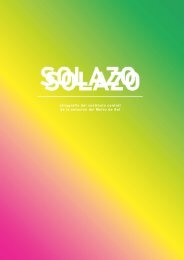Dwelling In (On) Bombay Cinema
Dwelling In (On) Bombay Cinema is an experimental research into the domestic condition of Bombay through a reading of Bombay cinema. It composes of an audio-visual product and the following textual documentation of the investigation methodology. These two entities are intended to be archived together digitally and physically. This work is part of the final assignment (trabajo fin de máster) of the masters programme in architectural communication or MAca (Máster Universitario en Comunicación Arquitectónica ) in the Superior Technical School of Architecture of Madrid (Escuela Técnica Superior de Arquitectura de Madrid) under the Technical University of Madrid (Universidad Politécnica de Madrid). The following document is to accompanied by the digital essay-film available through the following link: https://youtu.be/OO8dxD5Ypos The investigation is authored by Akshid Rajendran. And tutored by Atxu Amann y Alcocer and Samuel Fuentes. January 2019.
Dwelling In (On) Bombay Cinema is an experimental research into the domestic condition of Bombay through a reading of Bombay cinema. It composes of an audio-visual product and the following textual documentation of the investigation methodology. These two entities are intended to be archived together digitally and physically. This work is part of the final assignment (trabajo fin de máster) of the masters programme in architectural communication or MAca (Máster Universitario en Comunicación Arquitectónica ) in the Superior Technical School of Architecture of Madrid (Escuela Técnica Superior de
Arquitectura de Madrid) under the Technical University of Madrid (Universidad Politécnica de Madrid).
The following document is to accompanied by the digital essay-film
available through the following link: https://youtu.be/OO8dxD5Ypos
The investigation is authored by Akshid Rajendran.
And tutored by Atxu Amann y Alcocer and Samuel Fuentes.
January 2019.
Create successful ePaper yourself
Turn your PDF publications into a flip-book with our unique Google optimized e-Paper software.
Part A: An Extended Prologue<br />
with projection the silent films broadcasting culturally familiar<br />
religious narratives (Jamal, 1991) but as a postcolonial <strong>In</strong>dia<br />
struggled to find its place globally, and urbanisation began slowly<br />
altering century-long rural conventions, numerous films like<br />
Mother <strong>In</strong>dia (Khan, 1957) began to change the social perception<br />
of suppressed sections of society and even empowering urban<br />
women. These nationalist themes began to find themselves in a<br />
progressively socio-politically-tense <strong>In</strong>dia and consequently, the<br />
working-class’ long-muffled anger was personified in the “angry<br />
man” genre, as in Deewaar (Chopra, 1975) and Zanjeer (Mehra,<br />
1973). Subsequent to the communal tensions of the early 90s,<br />
<strong>Bombay</strong> <strong>Cinema</strong> would continue to secularly publicise the damage<br />
caused by the fundamentalist communal terror inflicted upon the<br />
city in <strong>Bombay</strong> (Ratnam, 1995), Black Friday (Kashyap, 2007), and<br />
the The Attacks of 26/11 (Varma, 2013). While film has obviously<br />
influenced popular culture, fashion and the music industry alike,<br />
the film industry has served as an archive “deeply saturated with<br />
urban dreams” of the city’s history (Mazumdar, 2007, p. xxxv).<br />
<strong>Bombay</strong> <strong>Cinema</strong> has been shown by numerous scholars to be the<br />
greatest reservoir of the urban experience of <strong>Bombay</strong> at our disposal,<br />
and with good reason. From high-budget to low-budget,<br />
every film representing the city of <strong>Bombay</strong> has recreated or rethought<br />
urban space to craft a unique cinematic archive of the city.<br />
Not only has <strong>Bombay</strong> cinema successfully acted as a sort of escape<br />
from the troubles of a city-life, it has acted as a self-reflexion<br />
of the collective urban vision of <strong>Bombay</strong>. <strong>Bombay</strong> cinema has remained<br />
through the turn of the millennium as the clearest, most<br />
immediate and entertaining medium of communication with the<br />
masses.<br />
Owing to its characteristic captivating nature, <strong>Bombay</strong> cinema as<br />
a medium of communication for social change has been explored<br />
by various filmmakers. <strong>Bombay</strong> cinema since its inception has<br />
16




